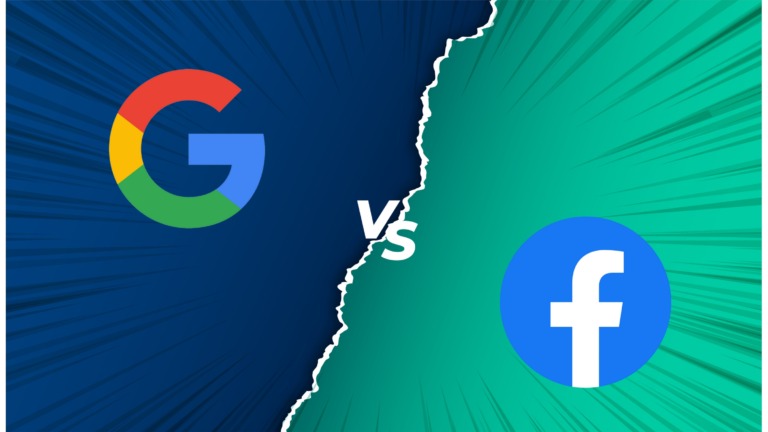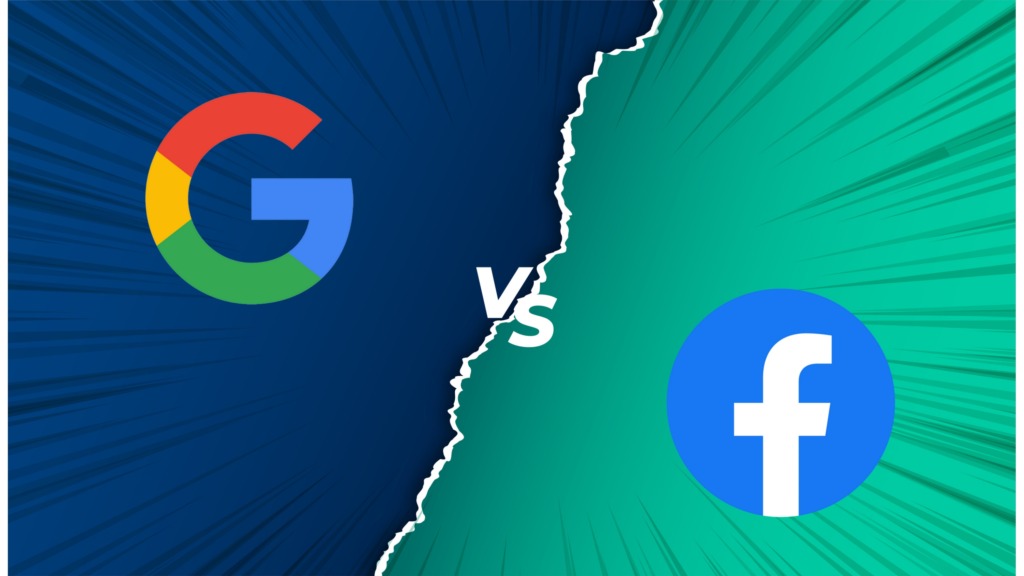The Pros and Cons of Google Ads and Meta Ads: Which Platform Should You Choose?
In the vast realm of online advertising, two giants reign supreme: Google Ads, previously known as Google AdWords, and Meta Ads. These platforms offer powerful targeting options, extensive reach, and the potential to generate significant results for businesses of all sizes. However, each platform possesses its unique features, advantages, and disadvantages that marketers must carefully consider before making investments. In this comprehensive guide, we’ll delve into the pros and cons of Google Ads and Meta Ads, empowering you to make an informed decision about which platform best suits your marketing objectives, target audience, and budget. So, let’s dive right in!

Google AdWords: Tapping into Search Intent
Google AdWords, now rebranded as Google Ads, has long been the go-to platform for search engine advertising. It harnesses the power of search intent to connect businesses with potential customers actively looking for their products or services. Let’s explore the key advantages and disadvantages of using Google Ads:
Pros of Google Ads:
- Unparalleled Reach: With over 5 billion searches per day, Google provides an unmatched opportunity to connect with a vast audience actively searching for products or services like yours. It’s a digital goldmine brimming with potential customers.
- Intent-Focused Targeting: Google Ads allows you to precisely target users based on their search queries, enabling you to reach potential customers who are actively expressing interest in what you offer. It’s like presenting your products to eager buyers with open wallets.
- Comprehensive Keyword Targeting: Google Ads’ keyword targeting enables you to bid on specific search terms and tailor your ads to match user intent. By aligning your message with what users are searching for, you ensure your ads reach the right people at the right time.
- Ad Extensions for Increased Visibility: Google Ads offers various ad extensions, such as sitelinks, callouts, and structured snippets, that enhance your ad’s visibility. These extensions provide additional information, enticing users to click and explore further.
Cons of Google Ads:
- High Competition and Costs: Due to its immense popularity, certain keywords on Google Ads can be highly competitive, leading to increased costs per click (CPC). This fierce competition can make it harder for smaller businesses with limited budgets to compete effectively.
- Steep Learning Curve: Google Ads’ interface and campaign setup can be complex for beginners, requiring time and effort to master. It’s like learning to navigate a labyrinth before you can unleash the platform’s full potential. Proper optimization and ongoing management are crucial for achieving desired results.
- Limited Visual Advertising Options: Compared to Meta Ads, Google Ads primarily relies on text-based ads. While effective for certain industries, this limitation can dampen the visual impact and creative possibilities of your advertising campaigns.
- Ad Blindness: With the ubiquity of Google Ads, some users have developed ad blindness, ignoring or skipping over search ads altogether. This phenomenon reduces the effectiveness of your ads and challenges marketers to find innovative ways to capture users’ attention.
Meta Ads: Harnessing Social Engagement
Meta Ads takes center stage as the leading social media advertising platform, leveraging its massive user base and robust targeting capabilities. Let’s explore the pros and cons of using Meta Ads:
Pros of Meta Ads:
- Massive User Base and Detailed Targeting: With over 2.8 billion monthly active users, Facebook provides unparalleled access to a vast audience. Its targeting options based on demographics, interests, and behaviors allow for precise audience segmentation. You can define your ideal audience based on factors such as age, gender, location, interests, and even purchase behavior. This level of granularity ensures that your ads are reaching the right people who are more likely to be interested in your products or services.
- Rich Visual Advertising: One of the standout advantages of Facebook Ads is its visually appealing ad formats. You can use eye-catching images, engaging videos, and interactive carousels to showcase your products, tell compelling stories, and capture users’ attention. The visual nature of Facebook Ads allows for more creative expression and can have a significant impact on driving engagement and conversions.
- Enhanced Social Engagement: Meta Ads provide users with the opportunity to engage directly with your ads through likes, comments, and shares. This social interaction fosters social proof, as users see their peers engaging with your brand, which can enhance brand credibility and organic reach. Additionally, user engagement with your ads can generate valuable user-generated content and word-of-mouth marketing.
- Lower Average Cost: In many cases, Facebook Ads offer a more cost-effective option compared to Google Ads. The average cost per click (CPC) on Facebook tends to be lower, making it an attractive choice for businesses with limited budgets. Facebook Ads allow you to reach a wide audience without breaking the bank, maximizing your return on investment.
Cons of Facebook Ads:
- Ad Fatigue and Ad Blockers: With the increasing number of ads on Facebook, users can suffer from ad fatigue. They may become less responsive to ads, resulting in decreased engagement and conversion rates. Additionally, some users employ ad blockers, further reducing your potential reach. To combat ad fatigue, it’s essential to create fresh and engaging ad content that resonates with your target audience.
- Limited Search Intent: Unlike Google Ads, where users actively search for specific information, Facebook Ads rely on users’ interests and behaviors. This can make it challenging to capture the attention of users who may not be actively looking for your products or services. Your ads need to be compelling and strategically positioned to grab users’ attention within the Facebook ecosystem.
- Ad Placement Control: While Facebook provides placement options such as newsfeeds, right column ads, and the audience network, you have limited control over where your ads appear. This lack of control can impact ad performance and may require careful monitoring and optimization to ensure your ads are displayed in the most relevant and effective placements.
- Privacy Concerns and Algorithm Changes: Facebook has faced scrutiny regarding privacy concerns and data usage practices. Changes in algorithms and privacy policies can impact ad performance and targeting capabilities. Marketers need to stay updated with the platform’s policies and adjust their strategies accordingly to navigate these changes effectively.
| Features | Meta Ads | Google Ads |
|---|---|---|
| Reach | 2.8 Billion monthly active users | Over 5 billion daily searches |
| Targeting | Detailed targeting based on demographics, interest, behaviors | Primarily text-based ads |
| Ad extexions | Limited options for extensions | Various extensions for enhanced visibility |
| Ad formats | image ads, video ads, carousels | Primarily text-based ads |
| Ad placement | Newsfeeds, right column ads, audience network | Search results, websites, and partner networks |
| Cost | Often more cost-effective compared to Google Ads | Can be highly competitive with varying costs |
| Learning Curve | Relativetly intuitive and usser-friendly interface | Complex interface, requieres time to master |
| User engagement | Likes, comments, shares, fostering social proof | Clicks and conversations through search intent |
| Visual Impact | Visually appeling ad formats | Primarily text-based with limited visual creativity |
| Ad Fatigue | Users may suffer from ad fatigue | Some users develop ad blindness |
| Algorithm changes | Frequent algorithm changes impacting ad performace | Stable algorithms with less volatility |
| Privacy concerns | Privacy concerns and data usage scrutiny | Relatively fewer privacy concerns |
Conclusion
In the battle of Google Ads vs. Meta Ads, there is no definitive winner. Each platform has its strengths and weaknesses, catering to different advertising objectives and target audiences.
Google Ads excels in capturing search intent, offering comprehensive keyword targeting, and reaching users who are actively searching for products or services. It provides unparalleled reach and allows you to tap into the massive search volume on Google. However, it can be highly competitive and costly, making it challenging for businesses with limited budgets to compete effectively.
On the other hand, Meta Ads harnesses the power of social engagement, leveraging its massive user base and detailed targeting options. It allows you to create visually appealing ads, engage with users on a social level, and often offers a more cost-effective option compared to Google Ads. However, it relies on users’ interests and behaviors rather than search intent, which may present challenges in capturing the attention of users who are not actively looking for your offerings.
Rather than seeing Google Ads and Meta Ads as competitors, why not use both platforms strategically? By combining the two, you can enjoy the best of both worlds and seize a wider range of opportunities.
